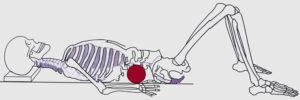
Random Thoughts on Overcoming Low Back Pain
An area I find of concern for people trying to overcome low back pain is the post-rehab process.
For instance, you’ll see a person with low back pain opt for conservative treatment.
Or.
Surgery, if conservative treatment doesn’t work.
In the cases were people improve with conservative treatment or surgery, they may return to normal activities after a few months; however, they return with no maintenance program and tend to lack education about their mechanism of injury. Often what you see happen is that within a few months to a few years; a person gets a relapse of their symptoms. And the relapse tends to be worse than the original symptoms.
Now.
Why does this relapse occur?
Often it’s because the person with back issues returns to activities that created their back injury and they fail to engage in a proper maintenance program.
For example.
I had a person come to me a month ago with 2 prior surgical procedures; a lumbar microdiscectomy and laminectomy.
After both surgical procedures, this person was sent to physical therapy to begin the post-surgical rehab process. After a few sessions of physical therapy, this person was pain-free and discharged; however, a few years year went by, and the person had 2 separate relapses.
Both relapses required the person to return to physical therapy, to which their symptoms improved. But they were not completely pain-free. They had difficulty with prolonged sitting and bending over; yet, the symptoms were manageable, and this person was discharged after 2½ months of physical therapy (2nd relapse).
With 2 previous surgical procedures and a history of relapses, this person knew they had to make changes to their lifestyle. They had concerns about exercising on their own, and we’re looking to achieve a pain-free life again.
And it’s at this moment, we met.
Upon, following my Youtube channel for a few years and knowing that I did personal training for people with low back issues, they decided to reach out to me for a consultation and coaching.
Upon consulting with this client, 3 things stood out to me:
1. They had minimal knowledge of their mechanism of injury.
2. They had a modest understanding of proper lifting posture.
3. And hadn’t done any weight training in their life.
This made me shake my head.
Because how is one supposed to maintain their progress if they don’t understand how their back issues developed? And don’t follow a post-rehab spine sparing exercise program.
These were issues I took note of because if this client had both of these addressed after the initial surgery, they might have never needed to return to physical therapy.
Note: My YouTube channel and email inbox is full of people sharing a similar story to my client above. People opt for surgery, feel good after a few months, and then within a year or so, they’re right back to square one. A lack of knowledge about how their back injury developed and a failure to follow a post-rehab exercise program is what hurts these people.

The left and middle postures represent poor lifting technique and increase the chances of the spine buckling. The right lifting posture represents a good lifting technique that spares the spine and reduces the chance of buckling. Image Licensed from “belchonock/depositphotos.com”
Whether you blame the surgeon, physical therapist, chiropractor, trainer, or whomever it may be, there seems to be a poor follow-up when it comes to the post-rehab process of low back injuries. Now, I’m not blaming clinicians and trainers only, because it could be the person with the back injury failing to follow the guidance from the clinician or trainer.
For instance, maybe the surgeon suggested physical therapy? But the physical therapy program was not beneficial.
Or physical therapy was beneficial. And the client was recommended to follow-up with a personal trainer for a spine-sparing training program; yet, the client failed to do so because they may have been feeling good after physical therapy — and didn’t see the value of investing in a quality trainer.
Either way, there are different ways you can look at the post-rehab process, and unfortunately, both happen. The clinician’s and trainers fail to deliver on a proper rehab and post-rehab program. Or the back pain person fails to follow the recommendations set out for them.
Regardless of who is to blame for this, the issue is that the “person” with back pain is now experiencing a relapse. And this relapse could lead to new problems such as mental health issues (e.g., depression), a new surgery, and financial problems (e.g., cost of new treatment, financial burden away from work).
Not an ideal situation.
And this could have been avoided if the rehab/post-rehab service the person with low back pain received was beneficial. Or if the person with low back pain were following the appropriate post-rehab recommendations.
In Summary
There are three important takeaways I hope you can learn from this blog post:
1. If you’re someone that has overcome back pain or is on the verge of doing so, be sure to follow a proper maintenance program. Perhaps that involves hiring a personal trainer or strength coach that can help provide you with a spine-sparing exercise program. Or, maybe that involves you taking the time to educate yourself about back injuries and exercise. Either way, the investment is worth it, because if you have to go down the route of surgery or additional treatment — the physical, mental and financial burden may be overwhelming.
2. The post-rehab process is just as important as the rehab process. If you undergo a microdiscectomy, and you’re pain-free after a few months. Great. But don’t think surgery is a permanent solution. If you start doing the wrong movements that create a back injury (e.g., disc herniation), then you can end-up in square one again. Become educated about your back and be sure to understand the mechanisms that created your back injury.
3. Hire quality. If you want results, invest in the best. There have been many instances where I’ve heard of people with back injuries see a clinician or trainer, and they ended up leaving the session worse. In these cases, the money that these people invested was a waste, because they’re in a worse position now; however, if they went to see a clinician or trainer competent in the back (e.g., McGill Method), they may have seen improvements in their back without having long-term financial costs.
Thumbnail Image Licensed from “ Maridav/depositphotos.com”










